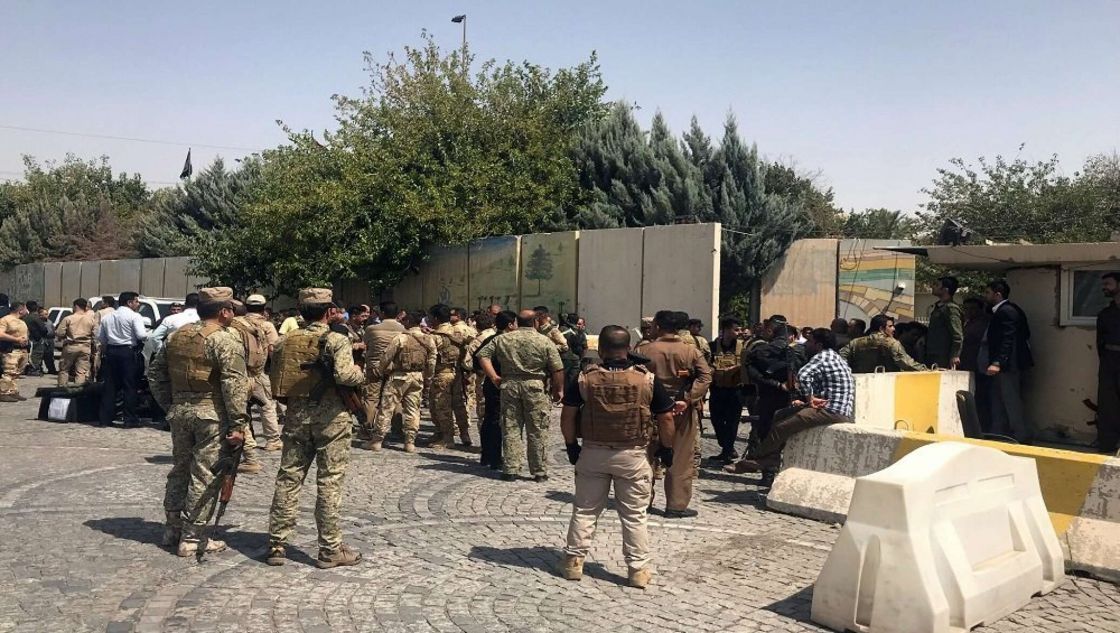- Articles
- Posted
Why is the ISIS Rabbit Getting Pulled out of the Hat Again?
More than two years after absence of any major operations of the terrorist organization ISIS, it has reappeared in two simultaneous operations, in Iraq and Syria.
In Iraq, the organization launched an attack on the headquarters of an Iraqi army company in Diyala governorate, northeast of Baghdad, killing 11 Iraqi soldiers.
In Syria, four days ago, fighting broke out near al-Sina’a prison (also known as Ghweran prison) in Hasakah, which holds an estimated 3,000 captured ISIS fighters. There is no definitive death count of ISIS members and the victims of the Syrian Democratic Forces (SDF) so far. However, the numbers, as indicated by various outlets, are in the dozens. Additionally, a large number of families in the Ghweran neighborhood and some neighborhoods adjacent to the prison, were forced to leave their homes until the situation stabilizes.
It is unlikely that the two processes are unrelated. Aside from the geographical proximity, which is in fact the field where the previous main ISIS operations took place, the large link between the Iraqi and Syrian files with regards to the issue of combatting ISIS is an actual and significant link.
The Context
If we attempt to look into the context in which these two operations took place, to find their actual meanings and objectives, we will find ourselves before a number of facts and indicators:
First: Neither these two operations, nor whatever is bigger than them, can truly revive ISIS. The historical circumstance that allowed the emergence and expansion of ISIS, at the beginning of 2014, no longer exists. In particular, with regard to the density of the various international elements on the ground directly in the face of ISIS, and specifically in light of the degree of cooperation and coordination through the Astana tripartite.
Second: The political-military factor that plays an important role in how things develop in the former ISIS-controlled areas in both Iraq and Syria is the American withdrawal, which has already begun, but has not yet been fully accomplished.
Third: Within the same point, one cannot neglect that the time for the withdrawal of all US forces from Iraq has come, and indeed, it is overdue, according to the Iraqi Parliament’s decision. It is known (at least from a logistical point of view) that the American presence in Syria is an extension of the presence in Iraq, and it is not possible to continue in Syria in the event of complete withdrawal from Iraq.
Fourth: It is also known that the dispute still exists and rages internally among American decision-makers, regarding the withdrawal deadlines. If it has become a reality for everyone that withdrawal will undoubtedly happen, there are still varying opinions about the timing thereof, as one of the two groups believes that immediate withdrawal is necessary, while the other believes that withdrawal should be postponed and gradual to the maximum extent possible. It is worth noting that the German inclination that “despite the insignificance of the German military presence”, exit from Iraq be postponed until October of this year, after the German Foreign Minister’s visit to Washington a few days ago, might indicate the estimated date planned for completion of American withdrawal from Iraq and Syria.
Fifth: Within the current escalation and negotiations between Russia and the US, which go beyond Ukraine to discussing the entirety of American military expansion after the collapse of the Soviet Union, the presence in Iraq and Syria is not outside the realm of negotiations.
Sixth: Within interpreting the last two ISIS attacks, it is not possible to overlook that the general trend over the past two years, and in recent months in particular, has been a constant trend, the main factor of which is the rapid escalation of targeting the US military presence in both Syria and Iraq, and certainly not by ISIS.
In all, these indicators can indicate the immediate objectives of taking the ISIS rabbit out of the American magician’s hat, which we believe can be summarized as follows:
First: The use of the two attacks as a tool in the American internal conflict in the interest of those who hold the opinion that withdrawal from Iraq and Syria should be postponed.
Second: Using the two attacks as a tool in the US-Russian negotiations on restoring the pre-1991 “military borders”.
Third: Using the two attacks to put pressure on the European “allies” to discourage them from the escalating trend among them, which calls for a military exit from both Iraq and Syria.
Fourth: Using the two attacks as a tool to put pressure on the Iraqi authorities, and to extract a concession that would give some “legitimacy” to extend the presence of the remaining US forces on Iraqi soil.
Fifth: Using the two attacks to pressure SDF and wave in its face, in an attempt to control the development of its relations with Moscow, and to try to control future prospects for its involvement and participation in discussing the Syrian public affairs, including the unified and comprehensive political solution for Syria and Syrians.
If it is true that US aims from temporarily reviving ISIS is limited to the previous objectives or some of them, then it is actually possible that Washington will be able to achieve some of these temporarily. However, on the other hand, these same objectives are part of the main American work plan prior to the two attacks. Therefore, the attacks carry an additional meaning, which is that continuing to work according to the same plan is no longer possible without quite a bit of “drama” and even a bloody “tragedy”.
What is also certain is that the general trend remains constant, and it is in effect that the comprehensive American withdrawal from both Iraq and Syria is drawing near, and within deadlines that will not be extended by escalation in our region or the world as a whole.



 Saad Saeb
Saad Saeb